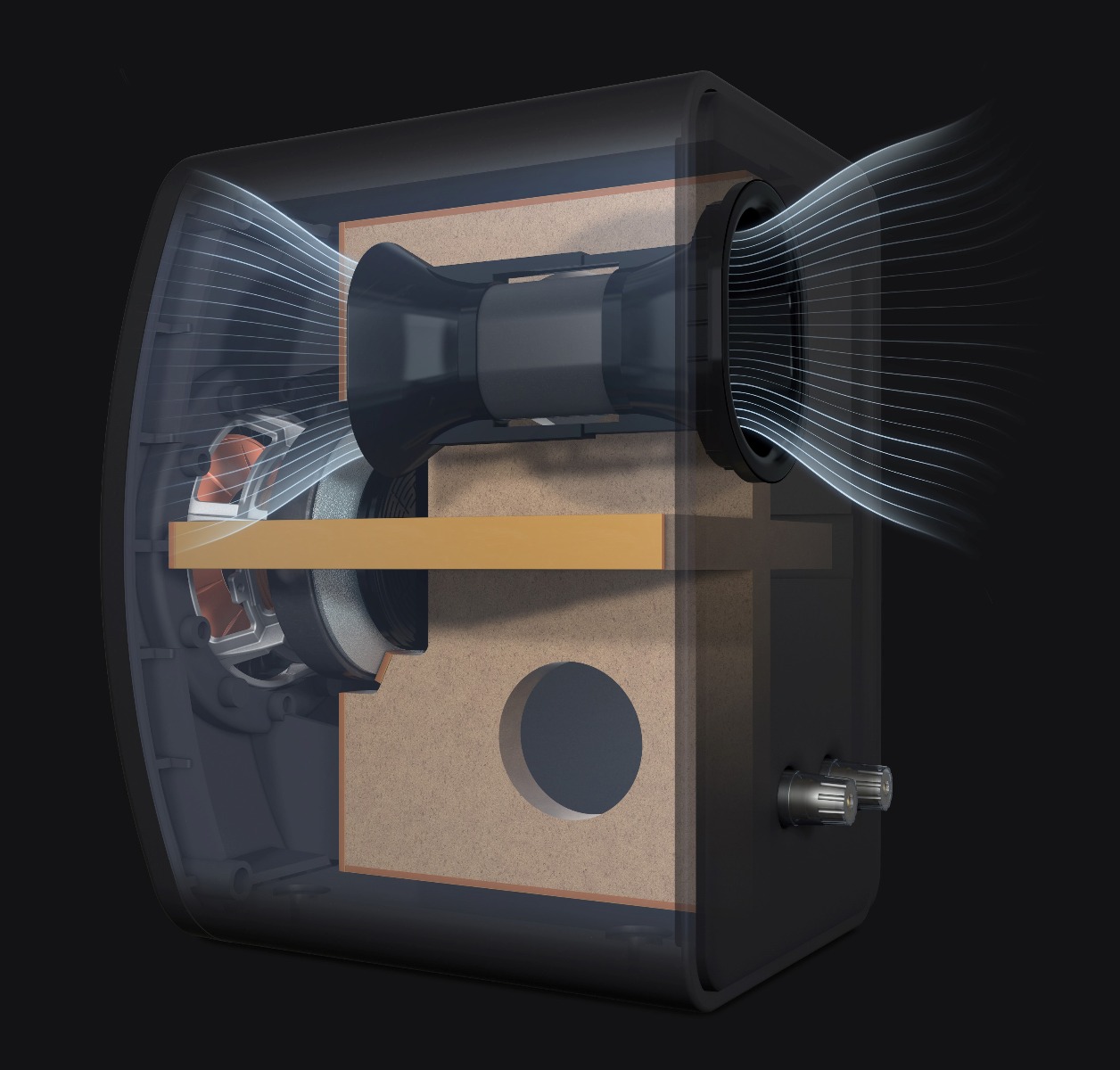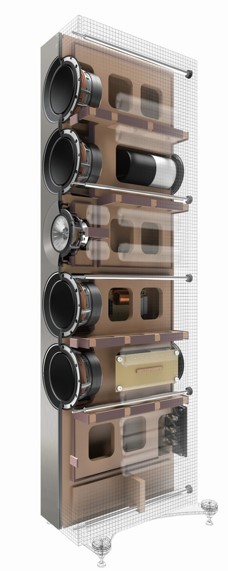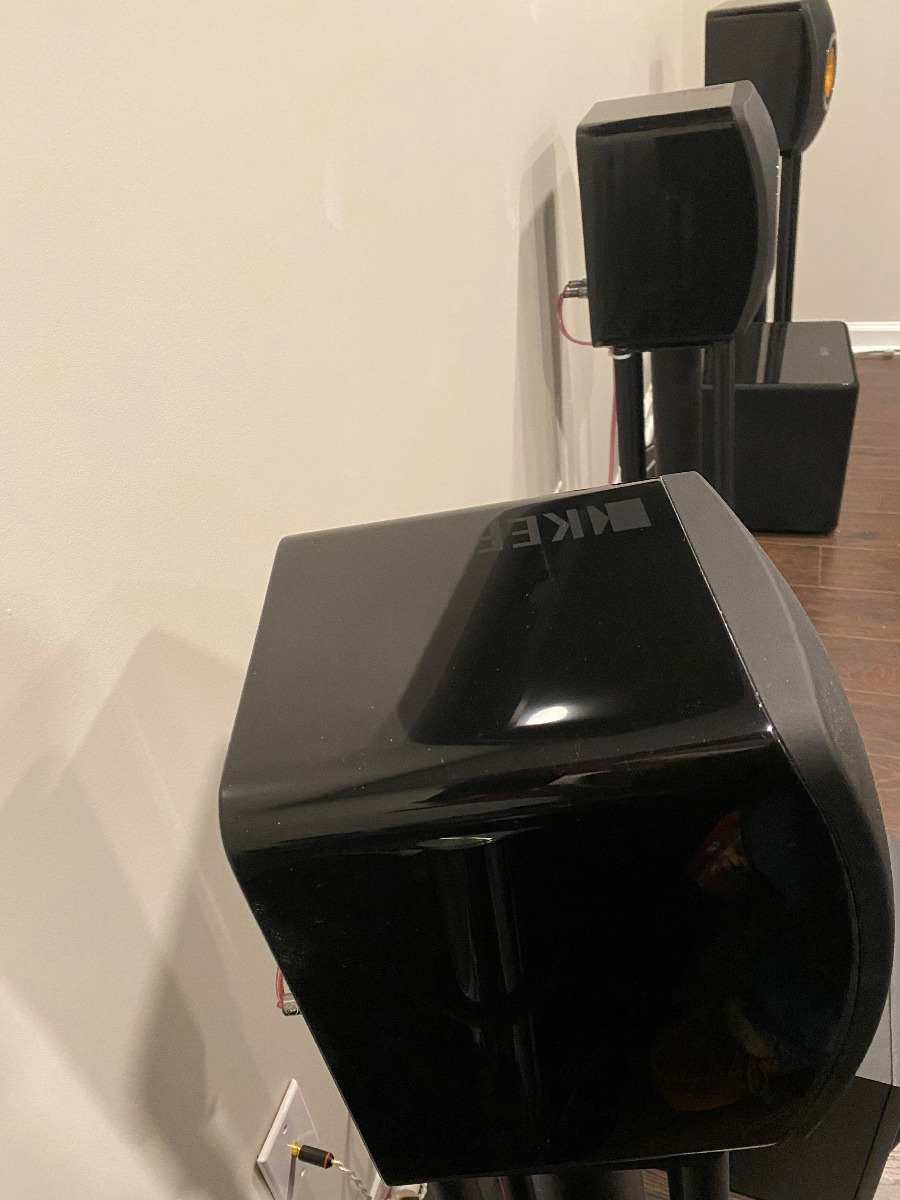Your local dealer or audio guru can be a huge help, but it pays to have some basic knowledge of your own. You can hit the forums – they can be chock full of great information, but they can also lead you down a path filled with incoherent mumbling. I offer this gem I found on a forum about how ported speakers work. I’ve paraphrased it to protect the innocent:
Ports are like how a car exhaust works. The exhaust propels the car even forward when you are applying the brakes. This is why cars don’t stop immediately when you step on the brake. If cars had mufflers on the front they would stop immediately when you hit the brakes. The engine in a loudspeaker (the woofer) makes bass and sends a little to the front and a little to the back through the port. The front bass is the one you want to hear and the excess is tucked away in the back to hide, but if it’s close to a wall it reflects back and you get double the bass you wanted. If the port is in the front you get all the bass the factory set for you.
Advice like this is not helpful although I am tempted to re-configure the exhaust on the family car is only to cut down on brake repair costs.
A one-size-fits-all answer to the question ‘how far from the wall should I place my rear-ported speaker’ is just not possible, but there are a few guidelines.
Too close to the wall may cause a muddling of the bass
Too far from the wall my make it difficult to walk around the room
And by all means avoid the dreaded ‘dead-zone’ where bass and midrange response is just completely deadened. The ‘dead zone’ is a real thing and depending on a few differing factors it may exist anywhere from 1 to 3 feet from the wall behind your speakers
A better question to ask is: What does it sound like to me? If you like the way it sounds, then you’ve properly placed your speakers. Okay, that’s seems a little simplistic but believe it or not, that’s the conclusion you’re ultimately going to come to. The key is to find a setup that sounds great and then experiment a little more just to prove you’ve found the optimal place for your speakers!
What's The Difference Between A Rear-And Front-Ported Speakers?

Ported (also known as bass reflex) speakers are designed to enhance the bass response of a loudspeaker through a series of calculations involving cabinet volume, cabinet filling and woofer response, among other variables. Typically, bass reflex speakers offer enhanced bass response over closed box designs. The downside to ports is that at lower frequencies ‘smearing’ can take place due to the transient response of the design. This smearing is reduced or eliminated through the ‘tuning’ of the port in conjunction with cabinet size and volume, hence the common name ‘tuned-port.’ Another drawback can be the phenomenon known as ‘chuffing’ where air turbulence in the port becomes audible. A well-designed port addresses both issues.
Where the port is placed is the result of a lot of different considerations, including visual aesthetics and optimal use of the available cabinet real estate available. For all intents and purposes there is no appreciable difference between a rear- and front-ported speaker. They both do the same thing – use the energy created by the woofer when it moves backward (or ‘in’) to enhance bass response.
The practical issue with a rear-ported speaker is how the energy coming from the cabinet interacts with the boundary behind it. Energy waves bounce off the nearest boundary (for our purposes we’ll call it a “wall”) and interact with the direct energy from the front of the speaker. This interaction may result in either a dip or boost in energy at certain frequencies that will make the overall sound in that frequency region muddy or inarticulate.
There is a school of thought that says rear-ported speakers should never be placed near a wall, and if you are going to place your speakers near a wall you must always use front-ported or closed-box designs. This is simply false. Are there a few things you can do to optimize the performance of a rear-ported speaker near a wall? Of course, but superlatives are always suspect, especially when it comes to audio.
What exactly does the port do?
Think about blowing into a bottle to get a sound. The larger the bottle the deeper the sound (and the more power you need to move enough air to make a sound), and vice-versa. The energy created by the air you blow into the bottle is analogous to the work a woofer does in a loudspeaker – it excites the air in the cabinet. The excited air in the bottle reacts with the air in the neck of the bottle to produce the sound you hear. There is a natural resonant frequency between the air in the neck (the port if you will) and the bottle itself (think cabinet).
In a loudspeaker, higher resonances make the port act like a sealed-box design – there is no appreciable energy excitement in the port. The closer you drop in frequency to the resonant frequency of the port the more excitement of the air in the port. At some point you will reach peak energy (the sound you make is loudest) and then as you move lower in frequency the excitement will begin to tail off until it disappears.
In a tuned-port design, the port resonance frequency is tuned to the resonant frequency of the cabinet to enhance the response in and around that frequency. When we design our tuned-port we do detailed computer analysis of the air movement in the cabinet which helps us pick the exact nodal point to place the port (that’s why our ports are always off-center).
How to Set Up Your Rear-Ported Speakers So They Sound Great
Most people assume what matters is the distance of the rear of the loudspeaker to the wall, but what we actually need to consider is the distance from the front of the loudspeaker to the wall. It is the relationship between the direct energy (front) and reflected energy (rear) that causes us grief. As that distance changes so do the affected frequencies.
Typically, the closer to the wall your loudspeakers are the more the bass response is affected, but the opposite is also true. What you’re trying to find is the best compromise between all factors. Those factors being: aesthetics, physical practicality, type of music, volume, type of room (live or dead), type of speaker and density of the boundary.
Too Close To the Wall, Too Far From the Wall
‘Whether you are using stands for your bookshelf speakers or you are using floor standing ‘towers’ (both are considered 'free-standing’), the wall behind the loudspeaker can have a large effect on bass response. The wall reflects the omni-directional energy emanating from the loudspeaker and it also reflects the energy from the port itself. For our purposes, we’ll ignore the omni-directional energy from the cabinet as in most home setups that energy is small (especially if you have a quality designed loudspeaker).
Two things occur when sound energy leaves a port and interacts with the rear wall: 1) certain frequencies get boosted, 2) certain frequencies get cut.
When a frequency gets boosted (sympathetic resonance) it adds to the energy of the original (direct) frequency causing an artificial increase in sound at that frequency (too much bass!). When that frequency is slightly time-smeared (typically arriving after the direct energy from the front) the result is a muddy, inarticulate sound.

A frequency gets attenuated after it destructively interacts (out of phase) with the direct energy causing the direct and reflected energies to cancel (not enough bass!). This happens when frequencies arrive at your ear out of phase with each other as a result of the interaction between the wall, the port and the distance to the listener (among other factors).
Farther Is Not Always Better
Farther is usually better, but don’t ignore the improvements that can be made by moving your speakers closer to the wall. It seems unintuitive but depending on the frequencies you’re having trouble with you may actually clean up some reflections by moving your speakers closer to the wall. Exactly what the affected frequencies are depend on all the things we’ve been talking about. Of course, all of this is frequency and volume dependent, but you will eventually be able to dial in a good compromise.
You could set your speakers more than 9 ½ feet from the wall behind the speaker. This will virtually eliminate all low frequency cancellation problems. Unfortunately, 9 ½ feet is not something we can all do so we need to look at other options.
A Quick Guide To Setting Up Your Rear-Ported Speakers
It all boils down to using the single greatest audio monitoring device ever created – the human ear – and getting your speakers to sound as good as possible before worrying about dialing them in. Forget what the forums say, forget what your audiophile buddy says, forget what you read here – just set your speakers up where you have to set them up because of the room’s design and then follow a few easy guidelines:
Change the virtual shape of your room by angling your speakers (toe-in or toe-out). Not only will this help with the soundstage it will also change the relationship of the rear port to your wall by changing the angle of reflection. It’s important to recognize that your speakers may not always be at the same angle to each other – rooms are not always symmetrical, so it stands to reason the angle of your speakers need to compensate for that.
You can add a little dampening material behind the speaker but be careful: There is no worse sounding room than an overly dampened one. The best way to treat reflection problems is through dispersion.
Experiment with the port bungs or tubes. These are meant to cut down on the energy leaving the port or to reduce the energy ‘piling up’ behind the speaker.
Moving your speakers farther or closer to the wall will often cut down on frequency pile-up but it can also affect which frequencies are cut. The closer your speakers are to the wall the higher the affected frequency and the farther away the lower. Remember! A small move can make a huge difference, so it’s best to go a few inches or degrees at a time.
For you calculating types, you can figure out the affected frequencies with this formula:
340/4 times the distance from front baffle to rear wall (in meters)

My LS50 passives (left, center and right) are placed a mere 3” from the wall behind them! Of course, I am using a pair of subwoofers crossed over at 80Hz for movies and 50Hz for music so low bass is not an issue. I experimented with several distances and found that once I put them right up against the wall they really opened up. YMMV. My speakers are also angled so that the reflections tend to bounce away from my listening position rather than back toward it. Because of the way my room is configured, my left LS50 is at a significantly more acute angle relative to the listener than the right one is. My speaker configuration may offend your innate need for symmetry, but even though the setup looks wrong if you close your ears the sound is extraordinary.
The DSP on the LS50 Wireless, LSX and LS50 Wireless II has several adjustments for boundary compensation. The ‘Wall’ setting allows you to control the excess bass energy from the Control or Connect app, allowing for further fine-tuning after you have found your optimal placement.
Never use an outboard equalizer to compensate for speaker placement issues – physical placement is the key to 90% of your issues. Equalizers add phasing issues and noise into the signal chain that are usually worse than the original issue. DSPs do not affect signal quality like outboard equalizers do because the signal processing takes place in the digital domain where it is immune to such things.
Finally – Don’t Over Think It
We sometimes get way too caught up in the elusive science of speaker placement. You’ll know when your system sounds bad and when it sounds great. Experiment! You’re not going to break anything, and you might be really surprised how good you can make your system sound with just a few adjustments.



